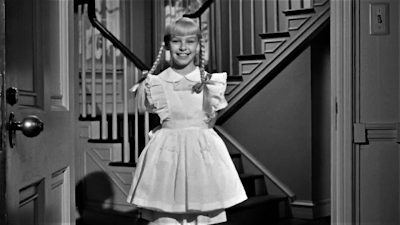Stephen Sondheim’s onetime-flop/now-revered 1971 Broadway
musical, Follies: a tuneful, dark-hued
elegy to aging and its attendant lost illusions, has always been one of my
favorites. At age 14, my adolescent arrogance (a redundancy if ever there was one)
convinced me that I had fully understood the show’s themes, when in honesty, all
that my then-limited life experience could reasonably have brought to the table
was sympathy. Now that I’m roughly the same age as Follies’ representative cast, I find the show to be not
only infinitely smarter and more insightful than initially thought, but the
passing years have added empathy to the mix. What I know now that I couldn’t have
known at 14 is that the follies of one’s life aren’t regrets; they’re just youthful
dreams that have just grown too burdensomely heavy to continue to carry with us as into old age.
Have you ever had a McDonald’s hamburger served to you on an
antique sterling silver salver tray? No? Well, if you had you would have some
sense of what it’s like to watch One from
the Heart; an intimate, almost inconsequential, character-driven dramatic musical
about a young couple as ordinary and uninteresting as any you’re likely to meet, inflated to near-bursting by a staggeringly inappropriate $23 million budget. Frannie works at a travel agency while Hank is co-owner of an auto junkyard. After five years together, on the eve of their July 4th anniversary, the couple finds themselves at a romantic crossroads: she
wants adventure, he wants stability. How each works through their respective five-year
itches is beautifully rendered in a meticulously recreated Las Vegas (everything
was shot on the Hollywood sound stages), but the content never justifies the presentation.
THE STUFF OF DREAMS
THE AUTOGRAPH FILES
Copyright © Ken Anderson
This all calls to mind Francis Ford
Coppola’s ambitious but flawed dream-project, One from the Heart being dubbed “Coppola’s Folly” on release, and the irony of its creation being instrumental in the demise of that other Coppola dream: his American Zoetrope Studios. As someone who came of age and developed a love for movies
during the youth-centric, formative years of The New Hollywood out of which Coppola emerged (roughly 1967 to
1979), I've discovered one of the more sobering realities of aging has been
bearing witness to what’s become of the ideals and ambitions of the golden boys
of the Hollywood Renaissance.
 |
| Francis Ford Coppola takes an ordinary couple and places them at the center of an extraordinary, fantasy vision of Las Vegas |
George Lucas, the once-venturesome director of the lively American Graffiti, now seems a virtual prisoner of his own success, holed up in Skywalker Ranch like Charles Foster Kane in Xanadu, content to spend his
days endlessly tweaking and re-tweaking the same movie; film geek Peter
Bogdanovich, after a couple of ill-fated Svengali episodes, reached creative
stasis after exhausting his fan-boy catalog of borrowed film styles; Martin
Scorsese is making kid’s films in order to stay relevant; and Steven Spielberg,
always more a company man than maverick, has emerged more quotidian and old-guard
than the most journeyman of filmmakers from the rigid days of the studio
system.
Of all the directors of the era, the trajectory of director
Francis Ford Coppola’s career is perhaps most indicative of what was right
(individualistic, innovative, artistic) and wrong (arrogant, undisciplined,
insulated, and out-of-touch) with the American New Wave in cinema of the '70s. His Godfather films (1972 & 1974) and Apocalypse Now (1979) all made good
on the movement’s assertion that commercial film was a viable medium for artistic
and personal expression. Of any of that film-school breed to proffer themselves as the worthy heir to the throne of the deposed moguls of yesteryear, Coppola alone
seemed to possess the requisite business smarts and creative vision to see it
through. Or so it seemed.
 |
| Raul Julia and Teri Garr lead a cast of seeming hundreds through a dance number staged on one of the meticulously recreated Las Vegas street sets |
Throughout his career, Coppola has spoken out (exhaustively)
about the levels of studio interference he’s had to battle in order to get his
films made. His unparalleled track record of critical and commercial successes
only seemed to confirm his contention that meddlesome studio heads were the
enemies of art. When, in 1980, Coppola purchased Hollywood General Studios to form
his own, independent motion picture studio—American Zoetrope—it was the realization
of a groundbreaking New Hollywood ideal: a space to make films independent of the
interference of the Hollywood money men.
Oh, but that Coppola could have had such interference.
As the studio’s debut feature, Coppola envisioned a simple, old-fashioned
Hollywood musical given a modern twist through the employment of cutting-edge digital
filmmaking innovations Coppola would come to dub “Electronic Cinema.” This allegedly
creativity-enhancing/money-saving innovation proved no match for a
director unable to understand that technology fetishism is never a viable
substitute for basic storytelling skills.
 |
| Teri Garr as Frannie |
 |
| Frederic Forrest as Hank |
 |
| Nastassja Kinski as Leila |
 |
| Raul Julia as Ray |
It’s my guess that One
from the Heart, in all its brobdingnagian excess, is attempting to comment
on the transformative power of love and its ability to make even the most unprepossessing
of souls feel as though they have suddenly stepped into one of those lushly
romantic, old-fashioned MGM musicals. A charming idea, conceptually
speaking, that holds a great deal of potential. It’s only in the practical
application where things start to hit a snag. Where a feather-light touch and
considerable wit is required for this kind of material, One from the Heart keeps tripping over its own intentions because
Coppola’s directorial approach to tender matters of the heart is to pound you
over the head with his tinker-toy infatuation with the technological.
To anyone who has ever actually experienced the pains and
joys of life, love, and romance, it’s plain that the only intensely felt
passions on display in One from the Heart
are the hots Francis Ford Coppola has for his “Electronic Cinema” gadgetry. A
prime example of a man so lost in an onanistic orgy of film love that, $23
million later, he failed to even notice that he hadn’t yet made a
movie.
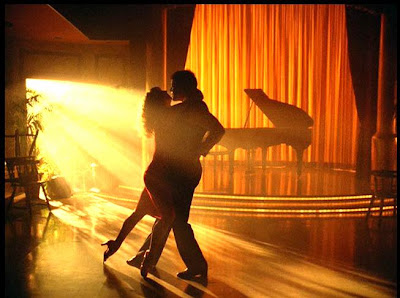 |
| Frannie finds her idealized vision of romance in singing (and apparently dancing) waiter, Ray |
WHAT I LOVE ABOUT
THIS FILM
By 1982, bad word of mouth preceding the release of a
Francis Ford Coppola film was as common an occurrence as an appearance by Charo
on The Love Boat. From The Godfather to Apocalypse Now, Coppola seemed to willfully perpetuate the image of
himself as the wild cannon maverick who could pull a masterpiece out of the
ashes of months of troubled production rumors and bad press. It’s in light of
all this that Coppola’s long-held assertion that One
from the Heart didn’t get a fair shake from the press has never quite rang true.
I remember being among the throngs of people clogging the
streets of Westwood Village in Los Angeles, excited beyond all reason at the
prospect of getting a pre-release glimpse of One from the Heart in January of 1982. The crowd was abuzz, each of
us parroting to the other Coppola’s rhetoric hype about being eyewitnesses to the
beginning of a new era in filmmaking.
As is typical at these kinds of preview screenings, a
general atmosphere of “The Emperor’s New Clothes” takes over and everybody loves
EVERYTHING. Each set, dissolve, and digital camera trick was greeted with thunderous
applause (in part, I suspect, because we all thought Coppola was somewhere in the
audience) and we were all convinced that we were watching the Citizen Kane of the '80s. It wasn’t until
I was walking back to my car that I realized that all of my laughter had been forced,
all of my emotional responses self-generated; and though dazzled by the visuals, a great many of the much-touted innovations were in reality, age-old theatrical stage effects (walls dissolving, color fades). I love romantic films and anyone who knows me knows that I'm a sentimental slob who cries at the drop of a hat...and yet the only sequence that brought forth waterworks was the finale…and
even that was due more to the still-touching-to-me instrumental theme "Take Me Home," arranged to sound like a child’s music box.
Reluctantly I had to admit that all of my positive feelings
about One from the Heart were keyed
in to my anticipation of the project and to the artistic potential Coppola’s candy-colored confection
presented. One from the Heart’s
visuals and technology were indeed impressive, but as evidenced by the audience’s
meeting each display of cinema magic with a round of applause; none of us got lost
in the magic enough to stop taking notice of it. Shades of Martin Scorsese’s New York, New York!
PERFORMANCES
The structure of a great many musicals is to have at
their center, incredibly ordinary, if not downright dull characters (e.g., Bells are Ringing, Sweet Charity, On a Clear Day You Can See Forever, Oklahoma) who find their lives magically transformed by love. However, few, if any, of the people
involved in the making of these movies have ever been so ill-advised as to actually cast
dull, ordinary people in these roles. Both Frederic Forrest and Teri Garr are
wonderful, talented character actors, but neither has the requisite something (star-quality?) to
make watching them more interesting than, say, spying on my neighbors over the
back fence. (Imagine the 1949 Stanley Donen musical, On the Town with the emphasis placed on the Ann Miller/Jules Munshin romance instead of Gene Kelly and Vera Ellen.)
Hammering home the obviousness of this fact are One from the Heart’s stupendously
charismatic co-stars, Nastassja Kinski and Raul Julia. Both actors have in
abundance what the film’s leads lack: screen presence. I kept wishing the story
would somehow shift gears and magically become a love story about the circus
girl and singing waiter.
 |
| Harry Dean Stanton and Lainie Kazan are terrific in their brief roles as the supportive friends of the constantly bickering lead couple |
THE STUFF OF FANTASY
For good reason this blog isn’t titled “Levelheadedness is
What Le Cinema is For…”, because movies, like dreams, have this ability to get
to us on so many different levels…even when said dream or movie doesn’t make a
lick of sense. By the same alchemy that interprets movement from still images
flickering past one’s eyes at 24-frames per second (precisely the way a
zoetrope works, the magic lantern device from which Coppola’s production
company derives its name), One from the
Heart’s almost non-stop flashes of technical brilliance do much to mitigate
the emotional hollowness at the center of the whole enterprise. The shimmering images Coppola
devises for One from the Heart enchant
in a way not dissimilar to mentally flipping through an expensive coffee table
book on photography; beauty in no need of context.
 |
| Fanciful imagery abounds: Hank finds his romantic ideal in circus performer, Leila - here seen dancing in a martini glass |
THE STUFF OF DREAMS
When it all began, the New Hollywood presented itself as the
antidote to the bloated, outmoded, assembly-line methods of studio system filmmaking.
With minimal budgets but ingenuity and talent to spare, a veritable army of
young and enthusiastic movie-makers succeeded for a time in rejuvenating
American motion pictures in a way we will likely never see again.
Unfortunately, success begat money, money was met with unbridled
freedom, and with freedom came arrogance, a lack of discipline, and even respect
for the principles that inspired the revolution in the first place. Directors
once up in arms over the fact that the budget for a single over-inflated bomb
like Paint Your Wagon ($20 million)
could have financed 20 smaller, perhaps better films, themselves nearly brought the industry to its knees due to their own ego-driven excesses.
Of all the golden boys who imploded when given a big budget
and free-rein (Michael Cimino -Heaven’s
Gate, Stephen Spielberg – 1941,
Martin Scorsese - New York, New York)
it can at least be said of Francis Ford Coppola that he bankrupted his own
studio and wasted his own money.
The version of One
from the Heart currently available on DVD has been re-edited and is a tighter, and in some ways, better film than the one I saw
in previews back in 1982. Alas, there’s just no getting past the fact that this
neon heart has no real pulse. One from
the Heart feels like a film made by someone who knows an awful lot about movies, but not much about life.
 |
| One from the Heart would have benefited greatly from the intimacy Coppola brought to The Conversation. Instead, this simple romance was handled with the bombast and overkill of Apocalypse Now |
Today, One from the Heart
still has the power to thrill me as eye candy, and pleases with its sometimes hauntingly beautiful jazz-tinged score, but in an odd way, it offends me in its epic waste.
In The Towering Inferno Paul Newman says of the smoldering shell of the skyscraper that needlessly took the lives of so many: “I don’t know. Maybe they ought to just leave it the way it is. Kind of a shrine to all the bullshit in the world.”
In The Towering Inferno Paul Newman says of the smoldering shell of the skyscraper that needlessly took the lives of so many: “I don’t know. Maybe they ought to just leave it the way it is. Kind of a shrine to all the bullshit in the world.”
Maybe that’s One from
the Heart’s ultimate merit: it stands as a melancholy shrine to all the tarnished optimism and corrupted ideals of the Hollywood New Wave of the '70s.
THE AUTOGRAPH FILES
 |
| Teri Garr autograph from when I was working at a bookstore on Sunset Blvd. |
 |
| Harry Dean Stanton autograph I got when he came to the Honda dealership where I used to work |
Copyright © Ken Anderson



























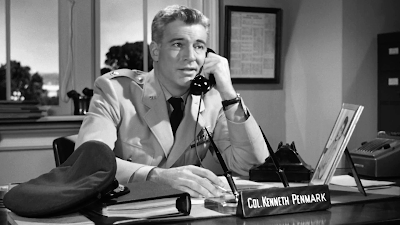





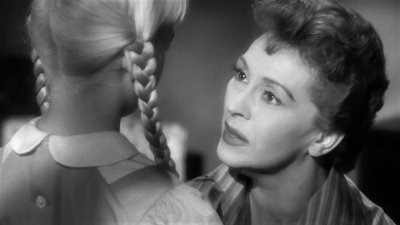







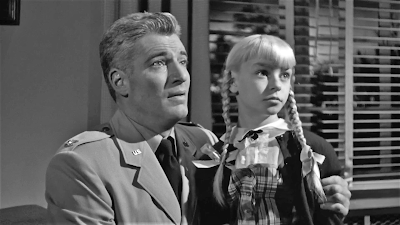


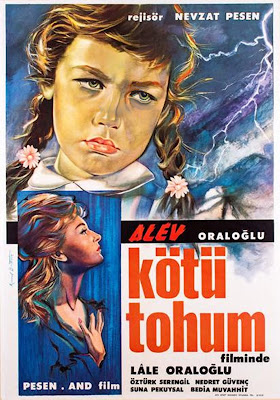
.jpg)

